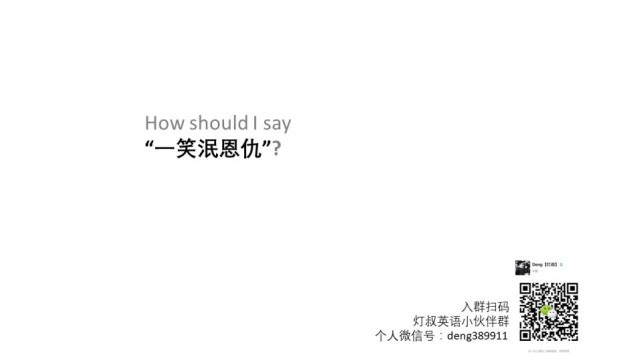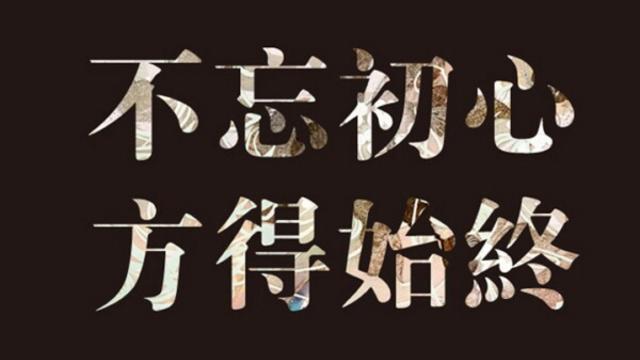(双语)刘江永:力证钓鱼岛是中国领土
作者:英文巴士
来源:英文巴士
2016-05-13 09:31
力证钓鱼岛是中国领土
Evidence Proves That Diaoyu Island Is Chinese Territory
刘江永
Liu Jiangyong
近年来,日本政府一方面否认中日围绕钓鱼岛主权归属认知有争议,另一方面不断加强在钓鱼岛问题上的宣介。日前,日本内阁官房网站发布了一些资料图片,妄称钓鱼岛是日本的“固有领土”。日方抛出的所谓证据,要么严重违反史实,要么歪曲中方立场,纯属自欺欺人。为排除其对中日关系的消极影响,增进中日两国人民的友好感情,有必要就日方的有关错误观点加以驳斥,以正视听。
In recent years, the Japanese government has been denying the dispute over sovereignty of Diaoyu Island, all while strengthening its own propaganda on the issue. A few days ago, the office of the Cabinet of Japan posted some data and graphics on its official website, claiming that Diaoyu Island is Japan’s “inherent territory.”However, the so-called proof offered by Japan is either self-deception that goes against history or a misinterpretation of China’s stance. In order to eliminate its impact on China-Japan relations and enhance the friendship between the two peoples, it is necessary to refute Japan’s evidence and clarify the facts.
一、甲午战争前日本官方已承认钓鱼岛属于中国
I. The Japanese government acknowledged China’s sovereignty over Diaoyu Island before the First Sino-Japanese War
日本政府反复宣扬钓鱼岛及其附属岛屿曾经是所谓“无主地”,日本政府1885年进行再三调查后没有发现中国人统治痕迹才决定占有,这符合有关领土的“先占原则”。这完全是无稽之谈。
The Japanese government has repeatedly claimed that Diaoyu Island and its affiliated islands used to be uninhabited, and Japan did not claim sovereignty over the islands until it had confirmed that they were not under China’s jurisdiction, in accordance with the “preemption doctrine.” These claims are completely groundless.
首先,日本1895年窃占这些岛屿之前,钓鱼岛是中国的无人岛,但绝非所谓“无主地”。据中国官方史书记载,自明朝洪武五年(1372年)起,中国明朝的册封使等就把钓鱼岛及其附属岛屿作为涉海东渡琉球国的海上航标,并派张赫、吴帧率领舟师维护海上通道,将这些岛屿纳入中国的海防范围。中国自清朝起将这些岛屿划归台湾府噶玛兰厅(今宜兰县)管辖。清政府首任巡视台湾的监察御史黄叔璥曾视察过钓鱼岛,并将其记载入述职报告《台海使槎录》。
First of all, although Diaoyu Island was uninhabited before Japan seized it in 1895, it was by no means unclaimed land. According to official historical records, starting from 1372, the fifth year of the reign of Emperor Hongwu of the Ming Dynasty, imperial title-conferring envoys used Diaoyu Island and its affiliated islands as a navigation mark to sail to Ryukyu. The imperial courts of the Ming also sent troops, led by Zhang He and Wu Zhen, to protect the maritime route and incorporated these islands into their coastal defense.From the Qing Dynasty, the islands were placed under the jurisdiction of Gamalan, Taiwan (known as Yilan County today). Huang Shujing, the first imperial supervision envoy sent by the Qing court to Taiwan, once inspected Diaoyu Island and wrote about it in his report, “A Tour of Duty in the Taiwan Strait (Tai Hai Shi Cha Lu).”
其次,自日本1874年首次入侵台湾至1894年发动甲午战争这20年间,日本海军省绘制的《清国沿海诸省》图和出版的各种水路志,均认定钓鱼岛、黄尾屿、赤尾屿是台湾东北诸岛。日本外务省、陆军省也先后对海军省所绘地图进行了确认。1885年,日本吞并琉球国改称冲绳县6年后,日本时任内务卿山县有朋便两次密令冲绳县在钓鱼岛等无人岛建立日本的标桩,但遭到当时冲绳县令和外务大臣婉拒,理由便是日本占领这些岛屿可能与中国发生冲突。如果他们当时即认定钓鱼岛及其附属岛屿是“无主地”,又怎么会担心与中国发生冲突呢?
Later, between 1874 (when Japan first invaded Taiwan) and 1894 (when the Sino-Japanese War began), all kinds of maps and literature drafted by the Navy Ministry of Japan, including one that lays out all the coastal provinces of the Qing court, identified Diaoyu Island, Huangwei Island and Chiwei Island as northeastern islands of Taiwan. Japan’s Foreign Ministry and Army Ministry also confirmed the accuracy of those maps.In 1885, six years after Japan annexed Ryukyu as Okinawa Prefecture, then Home Minister Yamagata Aritomo secretly asked the Prefecture to set up sovereignty marks on “no-man islands” like Diaoyu Island. The governor of Okinawa Prefecture and the Foreign Minister rejected this maneuver since the occupation of these islands could trigger conflicts with China. Of course, if they had actually believed Diaoyu Island and its affiliated islands were unclaimed, they would have had no such concerns.
第三,甲午战争前20年日本海军省一直认为钓鱼岛及其附属岛屿是台湾东北诸岛,其主要依据来自两方面:一是从英国海军1848年出版的《萨玛朗号航海记(1843—1846)》到1894年的英国海军文献及地图,均把钓鱼岛及其附属岛屿作为台湾东北诸岛记载,明确认定赤尾屿是中国这一岛链的最东端。二是中国清朝1863年出版的《大清一统舆图》。该图也清楚地把钓鱼岛划入中国台湾岛屿,而把赤尾屿对面的琉球属岛“久米岛”用不同方式标出。这些历史证据充分证明,在中日两国围绕钓鱼岛归属发生争议的“关键日期”之前,钓鱼岛确属中国。
Looking further back to 20 years before the First Sino-Japanese War, it is clear that the Japanese navy believed Diaoyu Island and its affiliated islands were northeastern islands of Taiwan.For one thing, the nautical journal of H.M.S. Samarang, which chronicled the years 1843-1846 and was published in 1848, as well as other literature and maps published by the British Navy, all marked Diaoyu Island and its affiliated islands as northeastern islands of Taiwan while confirming Chiwei Island as the eastern end of the Chinese island chain.In addition, the Qing Dynasty atlas, published in 1863, also designates Diaoyu Island as being under the jurisdiction of Taiwan. Kume-jima, an affiliated island of Ryukyu facing Chiwei Island, was marked in a different color. This ample historical evidence shows that, before the “critical period” when the dispute over sovereignty of Diaoyu Island escalated, Diaoyu Island always belonged to China.
二、甲午战争前日本偷猎者已知钓鱼岛是中国的无人岛
II. Japan knew Diaoyu Island was uninhabited before its poachers landed
日方曾杜撰了所谓古贺辰四郎1884年发现并派人开发钓鱼岛的谎言,经笔者揭穿后现已不再强调此事。但是,最近又抛出另一个所谓证据,即1893年井泽弥喜太赴“胡马岛”(钓鱼岛)在海上遇险漂至中国沿海获救,以此证明中方并不介意日本人前往钓鱼岛。
Originally, Japan made up a story about a man named Koga Tatsushiro who supposedly discovered and colonized Diaoyu Island in 1884. After being debunked as a myth, Japan fabricated additional evidence that a man named Izawa Yakita was once saved by Chinese people as he sailed to Kobajima Island (Diaoyu Island) in 1893. This was cited as evidence that China did not prohibit Japanese people from fishing near Diaoyu Island.
然而,据笔者掌握的第一手资料和日本外务省档案确认,井泽弥喜太是日本熊本县人,曾于1891年在钓鱼岛偷猎信天翁。1893年6月,井泽等人从琉球西南岛屿八重山赴钓鱼岛送米,但途中遭遇风暴被吹至中国浙江省平阳县。他们获救后去福州途中再度遇险,得到中国福建省地方官款待并派人护送到上海,移交给日本驻上海领事馆。问题在于,井泽弥喜太等获救的日本人并未向中国福建地方官讲明实情,而是谎称他们是从家乡九州到八重山运煤,途中遇险曾漂泊到“胡马岛”(KOBAJIMA,日方给黄尾屿篡改的岛名“久场岛”)。不过,井泽等人到上海后则向日本总领事代理林权助报告了他们从八重山去“胡马岛”(实为钓鱼岛)的真相。
However, according to firsthand reports and documents from Japan’s Ministry of Foreign Affairs, Izawa Yakita, a fisherman from Japan’s Kumamoto Prefecture, was found poaching albatrosses on Diaoyu Island in 1891.In June 1893, when Izawa Yakita sailed to Diaoyu Island from the Yaeyama Islands, he and his fellow sailors washed ashore in Pingyang County in eastern China’s Zhejiang province. Though they were rescued, they again encountered dangerous conditions on their way to Fuzhou, Fujian province. Local officials eventually transferred them to the Japanese Consulate in Shanghai.However, Izawa Yakita and the other sailors hid the truth from Fujian officials, claiming that they had been transporting coal from the Kyushu Islands to the Yaeyama Islands, but had accidentally floated to Kobajima Island on their way. They told the real story to Hayashi Gonsuke, then Japanese Consul General in Shanghai.
值得注意的问题是,井泽当时为何要欺骗中国的地方官呢?答案只有一个,就是他们十分清楚前往偷猎的无人岛是中国岛屿,担心一旦实情暴露会受到中方追究。当时的中国地方官无从得知井泽弥喜太曾前往钓鱼岛偷猎,所以只能按惯例救助日本海上遇难人员并协助他们回国。沿海中国人的大爱善举,怎么能成为日本拥有钓鱼岛的“证据”呢?
Their motivation for lying to Chinese officials must be explored. The decision overwhelmingly points to one conclusion: they realized that the “uninhabited” island they were approaching belonged to China, and they knew they would be punished if they told the truth. Instead, the local Chinese officials – who were kept in the dark about the real situation – helped the sailors get back to Japan. In this way, a philanthropic deed performed by China is being used by Japan as evidence for its own sovereignty over the island.
事实上,直到1895年日本殖民统治台湾及其附属岛屿之后,井泽弥喜太才得以在钓鱼岛、黄尾屿常住并进行殖民开发。据井泽弥喜太的长女井泽真伎称,她1901年出生在黄尾屿。1972年1月8日井泽真伎留下宝贵的历史证言指出:“当时的日本政府也知道中国早已经对该岛屿命过名,后来通过日清战争(甲午战争)将其与台湾一同抢夺过来,并于明治二十九年(1896年)正式编入日本版图。日中两国之间应该建立良好的关系,此时日本提出要将其占为己有的无理主张是错误的。日本战败时曾承诺将台湾以及当时一并抢夺的岛屿归还中国,尖阁列岛(钓鱼岛及其附属岛屿)理所当然地应该归还给它的故乡中国。” 这才是历史的真相。
The truth of the matter is, Izawa Yakita was not living on Diaoyu Island or Huangwei Island until 1895 when Taiwan and its affiliated islands were colonized by Japan. Izawa Masagi, Izawa Yakita’s daughter, admitted that she was born in 1901 on Huangwei Island.She confessed that, although the Japanese government knew China had claimed the island, they nevertheless grabbed it during the Sino-Japanese War and officially included it as part of Japanese territory on a map from 1896 (the 29th year of the Meiji period). In the testimony that she left behind, Izawa Masagi insisted that Japan should establish a sound relationship with China, criticizing Japan’s unlawful occupation of the island. She also noted that Japan had once promised to return the islands, along with Taiwan, to China at the end of World War II.
近年来,日本外务省网站还展示了一些当年日本人登岛开发的照片,以证明钓鱼岛属于日本,这根本站不住脚。因为这些照片记录的都是1895年日本殖民统治台湾后对钓鱼岛进行殖民开拓的情形。古贺辰四郎1895年6月10日才向日本政府申请租借开发钓鱼岛,1896年9月获准。古贺承认,其主要背景是日本在甲午战争获胜后拥有了这些岛屿。日本通过甲午战争窃占钓鱼岛及整个台湾所依赖的《马关条约》,在1945年日本战败投降后已被废除。拿出几张日本殖民统治台湾时期对钓鱼岛毁灭性开发的照片来证明钓鱼岛是日本的“固有领土”,莫非日本还要将当年在中国大陆和台湾进行殖民掠夺的照片也作为日本拥有这些领土的依据?
In recent years, in a bid to prove that Diaoyu Island belongs to Japan, Japan’s Ministry of Foreign Affairs has posted pictures of Japanese people from that era standing on the island. But these photos do not stand as evidence; all they prove is that Japan colonized the island after colonizing Taiwan in 1895.On June 10, 1895, Koga Tatsushiro submitted an application to the Japanese government to rent and develop Diaoyu Island. His application was approved in September of the next year. Koga Tatsushiro admitted that he submitted the application after Japan grabbed the islands in the Sino-Japanese War. However, the Treaty of Shimonoseki, the foundation of Japan’s occupation of Diaoyu Island and Taiwan, was abolished in 1945 when Japan surrendered in World War II.Japan’s attempt to prove its sovereignty of Diaoyu Island through a few photographs is simply unconvincing. If the claim were valid, Japan could use photos taken on Chinese mainland and Taiwan from those days as proof of the claim.











